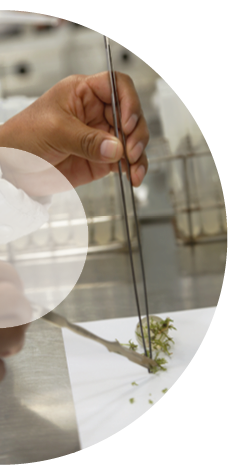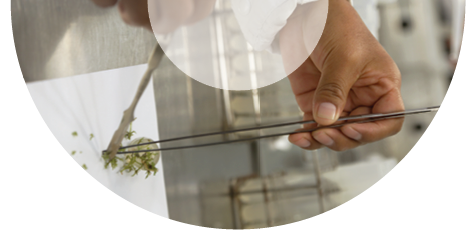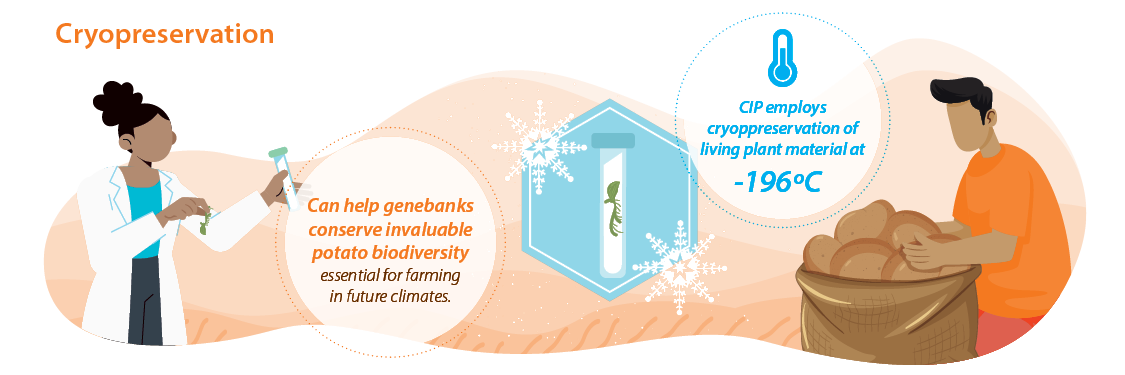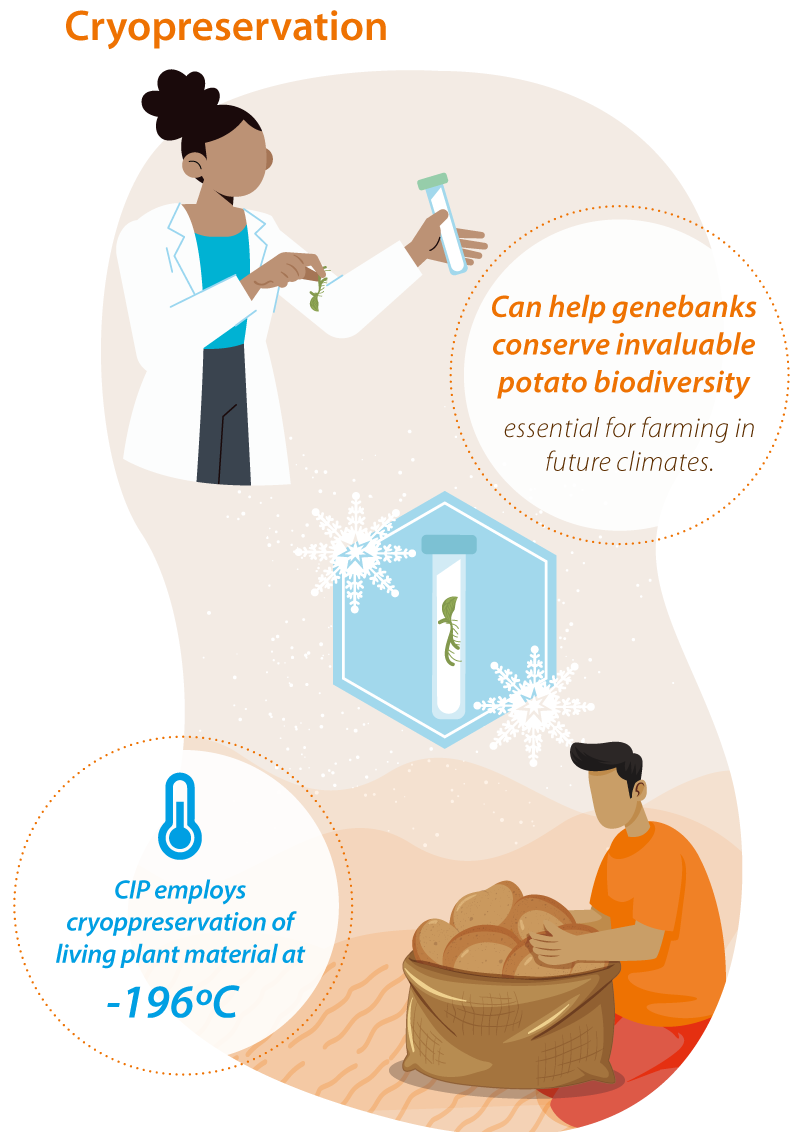Why a global black box for clonal crops?
Conserving the genetic diversity that underpins our food systems in genebanks, on farms, or in the wild is critical for our future security. It contains options to adapt our food production systems to global challenges like climate change and novel crop pests and diseases both now and in the future. As it is increasingly under threat, collecting and safeguarding priority food and livelihood security crops, including those in CGIAR and national collections, is ever more critical.
“Crops like rice and wheat that can be conserved by seed have a global backup system in the Svalbard Seed Vault. For clonal crops like potato and cassava, we are not there yet,” says Vania Azevedo, Head of the Genebank at CIP, home of the global in vitro collection of 16,200 unique accessions of potato, sweetpotato, and Andean roots and tubers from 80 countries. “But many crops cannot be conserved by seed because they don’t have any, like banana or their seeds do not respond well to being dried out, like cacao, or because they are vegetatively propagated like sweetpotato. Cryopreservation offers a long-term conservation solution for these crops so establishing the Latin America cryo-network is an important milestone.”
What is cryopreservation?
Cryopreservation uses liquid nitrogen (-196°C) to freeze tiny tissue samples from sterile in vitro plantlets rapidly. For example, for potatoes, samples are taken from the shoot tip. Once frozen, they can be conserved indefinitely if the temperature is maintained. Once they come out of the cryobank, the samples can be developed into complete plants in around 6-8 weeks and shared with institutions worldwide.
“While in vitro collections offer short-term storage of clonal crops, they are not a cost-effective or efficient long-term solution for a black box facility as the collections need to be continually propagated,” says Rainer Vollmer, Cryopreservation Associate Scientist at CIP and co-author of a 2022 paper on improving protocols in potato cryobanking.
“Cryopreservation needs less maintenance and is quicker – one person can conserve 300-450 potato shoot tips a day. There is a start-up investment cost, of course, and not all countries have the skills or equipment yet to cryopreserve their crops.”
Planting the seeds of the Latin America Cryonetwork 2022 workshop
The 2-day workshop took place in August as an essential step toward setting out the mission and operations of the Latin America Cryo-network.
“Cryopreservation is a necessary strategy for food security for future generations that we are looking to use for different collections we have in our genebank, principally our potato and Andean root and tuber collections,” says Aura Liz García Serquén from the National Institute of Agrarian Innovation (INIA) in Peru and workshop participant. “We worked together to map what we had in our genebanks, identify gaps and priorities, and agree on how to operationalize the network.”
Sharing this information revealed that while most of the NARS already have in vitro collections, only seven have started working on cryopreservation, and only two have cryo-collections. Constraints include the proper facilities, equipment and supplies, capacity building, and access to the right protocols.
“For storing dried seeds, one standard protocol is available that can be applied to a whole range of plant species whereas, for cryopreservation of clonal materials, a unique protocol needs to be developed for each crop, sometimes even for specific varieties, as they are uniquely complicated,” says Bart Panis, Alliance of Bioversity and CIAT, responsible for the global cryo-collection of bananas held in Belgium. “That is not realistic so instead, we need to take a pragmatic approach which means developing and refining many protocols to be able to implement the best one to support the NARS properly with technical backstopping.”







